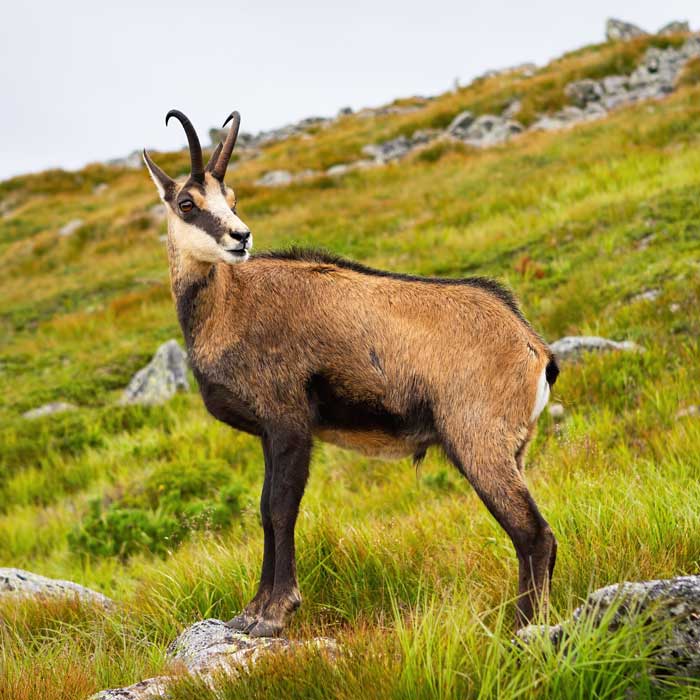
Chamois
The chamois, a characteristic wild animal of the Alpine regions, is a symbol of adaptability and the art of survival in extreme habitats. This fact sheet provides a detailed overview of the biology and ecology of the chamois and highlights the importance of protecting their habitats and sustainable management.
Chamois Products
-
Animal display chamois
1 reviewRegular price From 119,90€Regular priceUnit price / per -
Animal display chamois goat - outdoor set
No reviewsRegular price 143,30€Regular priceUnit price / per -
Animal display chamois goat
Regular price From 119,90€Regular priceUnit price / per -
Animal display chamois buck - outdoor set
No reviewsRegular price 143,30€Regular priceUnit price / per
Profile: Chamois
-
Scientific classification
- Class: Mammalia (mammals)
- Order: Artiodactyla (even-toed ungulates)
- Family: Bovidae (bovids)
- Genus: Rupicapra
- Species: R. rupicapra (chamois)
-
Physical characteristics
- Size: Body length of 100-130 cm
- Shoulder height: 70-80 cm
- Weight: 20-40 kg, depending on gender and subspecies
- Special features: Compact body, short legs, characteristic facial markings, curved horns in both sexes.
-
Habitat and distribution
- Common regions: Europe, especially alpine and mountainous areas
- Habitat: Rocky slopes, alpine meadows and pastures at altitudes of 500-3,000 m; adaptable to extremely steep terrain.
-
Nutrition
- Diet: Herbivore
- Typical food: grasses, herbs, leaves, shoots, lichens; in winter also buds and bark.
-
Reproduction and lifestyle
- Mating season: Autumn
- Gestation period: Approx. 5-6 months
- Litter size: 1 young per clutch
- Brood care: Females raise the young alone
- Social structure: Usually in small groups, called packs, which have a social hierarchy.
-
Lifespan and protection status
- Life expectancy: Up to 15 years in the wild
- Threat status: Not threatened, but local populations may be affected by hunting, habitat loss and disturbance.
- Conservation measures: preservation and protection of alpine habitats, regulation of hunting, protection from disturbances caused by tourism and infrastructure projects.




